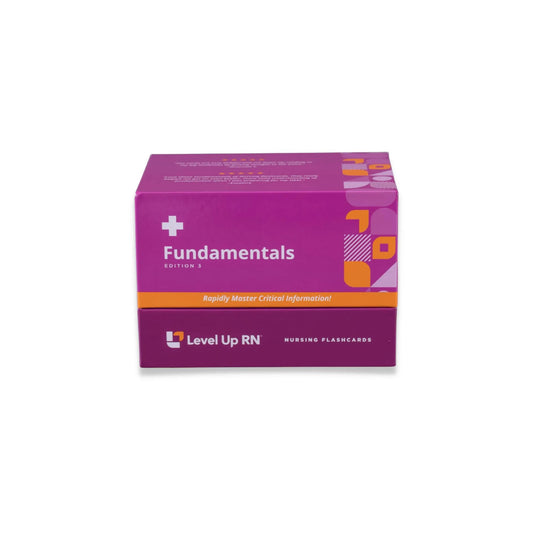In this article, we'll cover types of immunity, chronic vs. acute illness, and modifiable vs. non-modifiable risk factors.
The Fundamentals of Nursing video series follows along with our Fundamentals of Nursing flashcards, which are intended to help RN and PN nursing students study for nursing school exams, including the ATI, HESI, and NCLEX.
Types of immunity
Immunity can be active natural, active artificial, passive natural, or passive artificial.
Let's clarify what some of these terms mean
When you hear active, think fighting. The body is actively fighting the pathogen, or a component of the pathogen.
Fundamentals of Nursing - Flashcards
When you hear passive, think inactive. The body is not doing anything to fight off the pathogen. Instead, the immune system has passively received the gift of antibodies.
Natural means happening naturally through normal processes, like could have happened for humans in the stone age.
Artificial means happening through science and medicine.
Active natural immunity
In active natural immunity, your body produces antibodies (active) in exposure to a live pathogen (natural).
For example, you get chicken pox, and after your initial infection, you build immunity against the disease.
If you'd like to learn more about chicken pox, check out our Pediatric Nursing Flashcards.
Active artificial immunity
In active artificial immunity, the body produces antibodies (active) in exposure to a vaccine (artificial).
For example, when you got your COVID-19 vaccine, your body was given instructions to make a portion of the pathogen (not the whole pathogen). You were never exposed to the virus, but the body actively fought the small component of the pathogen because your immune system does not know the difference. Now, you have antibodies that your body actively created.
Passive natural immunity
In passive natural immunity, you receive antibodies (passive) that were originally created in response to a disease-causing agent (natural).
This occurs when a mother passes immunity to a child through breast milk or the placenta.
Passive artificial immunity
In passive artificial immunity, you receive antibodies (passive) that were created in exposure to a vaccine (artificial).
For example, if you are bitten by an animal, you will get a rabies shot containing rabies antibodies so you don’t become infected with rabies.
Illnesses
There are acute and chronic illnesses, both of which have modifiable and non-modifiable risk factors. We'll talk about what these terms mean here.
Classification of illnesses
Illnesses can be classified into acute or chronic illnesses.
Acute illness
An acute illness is one that appears suddenly. It usually has very severe symptoms. The good news is, usually this can be identified and treated, and the patient can go back to normal.
For example, appendicitis is an acute illness. All of a sudden, a patient may have abdominal pain and high fever. They go to the hospital. They get an appendectomy, and feel much better.
Chronic illness
Chronic illnesses have a slower onset and may come on gradually over time. They may not respond to treatment. Chronic illnesses persist for at least one year, if not longer.
As Meris explains in the video, she has a chronic illness—an autoimmune condition. It took a long time for Meris to notice the symptoms, to develop the illness, and she has had it for 15 years by now.
Risk factors
When discussing risk factors, it's important to consider a risk factor's modifiability. Is it something a patient can change?
Modifiable risk factors
Modifiable risk factors include diet, lifestyle, medications. These risk factors can be decreased or removed with lifestyle adjustments, like in the cases of obesity, smoking, or stress.
Non-modifiable risk factors
Non-modifiable risk factors are things that a patient cannot change. This includes their age, race or ethnicity, and family history.
Nursing education that you provide to your patient will focus on modifiable lifestyle factors. Non-modifiable factors will kelp you know what your patients may be at risk for, regardless of lifestyle changes.



2 comments
Thank you so much for clarifying this.
Thanks for very helpfull video and your great explanations